Augsburg (Free State Bavaria)
Home of the Fugger family
Detail
Date of first edition: 1572
Date of this edition: 1599 (with privilege)
Dimensions (not including margins): 33 x 47 cm
Condition: Good. Sharp copper engraving printed on paper. Old coloured. Centre fold as published. Wide margins.
Condition rating: A+
Map reference: Van der Krogt 4, 307, state 2 (with privilege); Taschen, Braun and Hogenberg, p.101: verso: last line ‘scribenda conuicit’; first line ending with ‘ciuitates’
From: Civitates Orbis Terrarum, Liber Primus (first publication 1572). Antwerp, Gilles van den Rade, 1575. (Van der Krogt 4, 41:1.1)
In stock
Augsburg commented by Braun
“The authorities of this city dedicate themselves in particular to caring for the poor. For as well as maintaining a hospice and an orphanage, in periods when the plague or syphilis were raging they also established a hospital, the Blatterhaus, to tend to and accommodate the afflicted. Furthermore, in 1519 and at their own expense, the Fugger family built about 100 houses for needy but respectable citizens in the suburb of St James, in effect a distinct quarter, which is called the Fuggerei.”
TRANSLATION OF CARTOUCHE TEXT: Following the catastrophic defeat of Varus and the subjugation of the Vandals, Octavianus Augustus conquered, rebuilt and enlarged Augusta Vindelicorum [Augsburg], a widely famed and very ancient city in Upper Germany. According to Strabo he settled 3,000 Romans here, from which the city took the name Augusta. Otto I repulsed a Hungarian attack in a heavy battle and restored Augsburg to the Empire. Augsburg’s glory is based on lavish buildings, spacious and magnificent squares, extremely defensive walls, moats and embankments, its significant turnover of goods, its internal constitution, its wealthy inhabitants and its care for the poor as well as its episcopal see, among other things.
Full title: Augusta Iuxta Figuram quam his ce temporibus habet delineata
Taschen:
The bird’s-eye view of Augsburg shows the individual groups of buildings very clearly, including the Fuggerei (72, bottom left), mentioned by Braun and founded in 1514 as an enclosed housing complex for impoverished citizens. The cathedral (32, right) is a Romanesque building with Gothic elements. Directly beside the town hall (52) in the centre of the city lies the church of St Peter am Perlach (35). Its tall tower, called the Perlachturm, was remodelled in the 17th century and is a city landmark. The present town hall was begun in 1615 in the Renaissance style. The church of St Anne houses the burial chapel of the Fugger family; Martin Luther stayed at the affiliated monastery (23, above St Peter am Perlach) when he was summoned to Augsburg to defend his theses before the imperial diet in 1518. The Benedictine abbey of SS Ulrich and Afra (17) on the left-hand edge of the map dates from the 15th century, when Augsburg was home to some 30,000 inhabitants. During this period Augsburg was a centre of German economic and intellectual life and frequently played host to imperial diets.
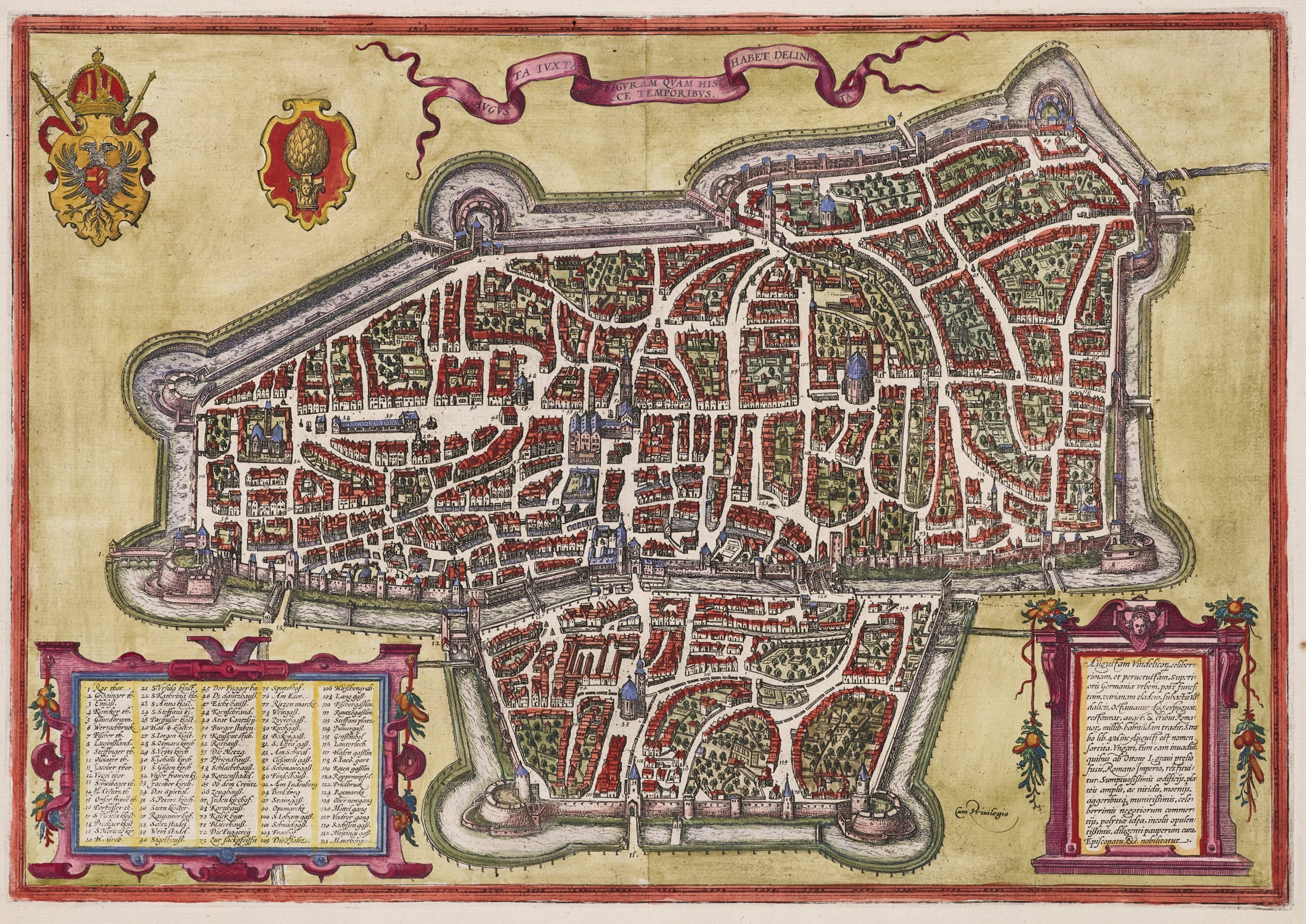
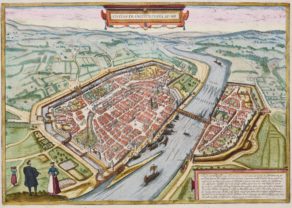
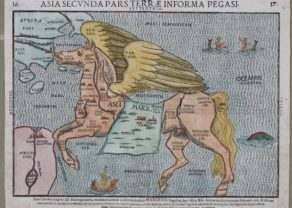
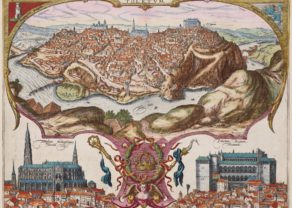
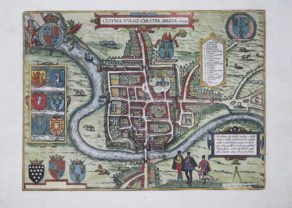
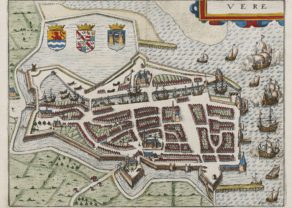
Augsburg and the Fuggerei
The map contains a key to 133 important town locations, including Die Fuggerei (or, Fuggereij), the world’s oldest social housing complex, built between 1514 and 1523 by the Fugger family for impoverished citizens. Mozart’s great-grandfather Franz Mozart, a master mason from Augsburg, lived in the Fuggerei from 1681 to 1693. The complex housed over 100 needy families, and is still in use today. Check: www.fugger.de/en/home.html.